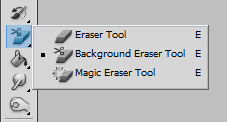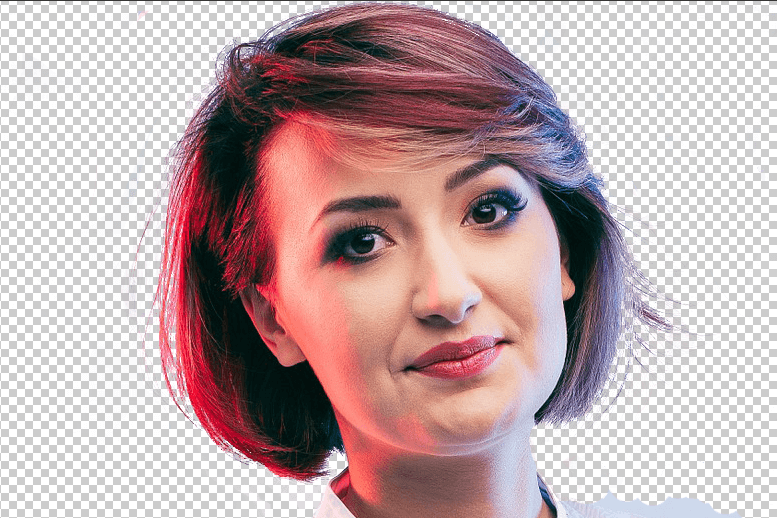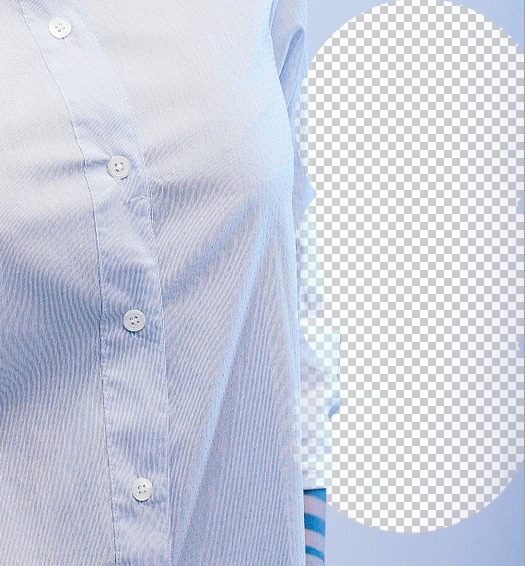How Do You Remove A Color From A Video In Photoshop
Photoshop offers many dissimilar techniques to remove an unwanted groundwork from an epitome. For elementary backgrounds, using the standard Magic Wand tool to select and delete the background may well be more adequate.
For more complicated backgrounds, you might use the Background Eraser tool. This tool samples the colour at the center of the brush and then deletes pixels of a similar color equally you "pigment." It feels like painting with acid. Allow me show you how information technology works.
ane. Open your image
—
Showtime past grabbing an image that you want to remove the background from. I'll exist using this image as it features areas that range from piece of cake removal through to more challenging spots.

2. Select Background Eraser
—
Select the Background Eraser tool from the Photoshop toolbox. It may be hidden beneath the Eraser tool. If it is, simply click and concord the Eraser tool to reveal it.

On the tool options bar at the top of the screen select a round, difficult brush. The near appropriate brush size will vary depending on the image yous're working on. Use the square subclass key ([ or ]) for quickly scaling your brush size.

Next, on the tool options bar, set the Sampling to Continuous, the Limits to Discover Edges and a Tolerance of somewhere between 20-25% is a good starting place.

Annotation: A low tolerance limits your eraser to areas that are very similar to your sampled color. A higher tolerance expands the range of colors your eraser volition select.
4. Begin erasing
—
Bring your brush over your background and begin to erase. You should meet a brush-sized circle with small crosshairs in the middle. The crosshairs show the "hotspot" and delete that color wherever information technology appears inside the brush area. It also performs smart colour extraction at the edges of any foreground objects to remove 'color halos' that might otherwise be visible if the foreground object is overlayed onto some other background.
Note: For the example image, I actually used a rather high Tolerance than the twenty-25% recommended above due to the broad range of blues backside this field of study.

When erasing, zoom upward your work area and effort to go along the crosshairs from overlapping on the edge of your foreground. It's likely that you will need to reduce the size of the castor in some places to ensure that you lot don't accidentally erase part of your foreground subject.
five. Choosing constructive limit and sampling settings
—
Even though I take used a smaller brush to work effectually the pilus and neck area, the Groundwork Eraser has however managed to gouge a few chunks out of the pilus and shirt.

For foreground image areas that share colors with the background (similar this i), yous may need to adjust the Sampling andLimits. In this picture show, I switched over to the Sampling: One time option, set my Limits to Discontinguous and prepare my Toleranceto xxx%.

The Sampling: Once option samples the color under the crosshair only the moment you lot click and information technology doesn't resample as you lot move your brush along. The Discontiguous Limit option allows you to erase all pixels that match the sampled colour that you're erasing. This allowed me to get in between the hair strands without erasing them.
There'south a skilful chance the Background Removal Tool may be all you lot need to complete your task.
Simply if not, read on.

While removing the background on our example image is mostly directly-frontward due to the fairly solid background, there are inevitably areas of our foreground subject that get wrongly erased every bit we work shut to foreground'southward edges.

In our example, the foreground and groundwork share like colors due to the lighting. This will be easiest to repair using Photoshop's Pen tool. I but have a modest department I need to touch upward, so I'll apply the Pen to create a clean selection and delete the unwanted background.


Conclusion
—
If you lot are working with a bones prototype with ample visual contrast between the subject and groundwork, you can most likely get away with using simply the Background Eraser Tool.
More circuitous images will likely require a mix of tools, samplings, and tolerances forth with occasional manual affect-ups. There will be times when at that place is no visual departure between the foreground and groundwork. We have to manually impose that stardom.
And don't forget that if y'all are saving your paradigm without calculation a new background, you demand to save it as a PNG to maintain the transparency.
This article was originally written for Sitepoint by Jennifer Farley and Gabrielle Gosha.
Source: https://99designs.com/blog/design-tutorials/how-to-quickly-remove-a-background-in-photoshop/
Posted by: julianmosurlow.blogspot.com

0 Response to "How Do You Remove A Color From A Video In Photoshop"
Post a Comment